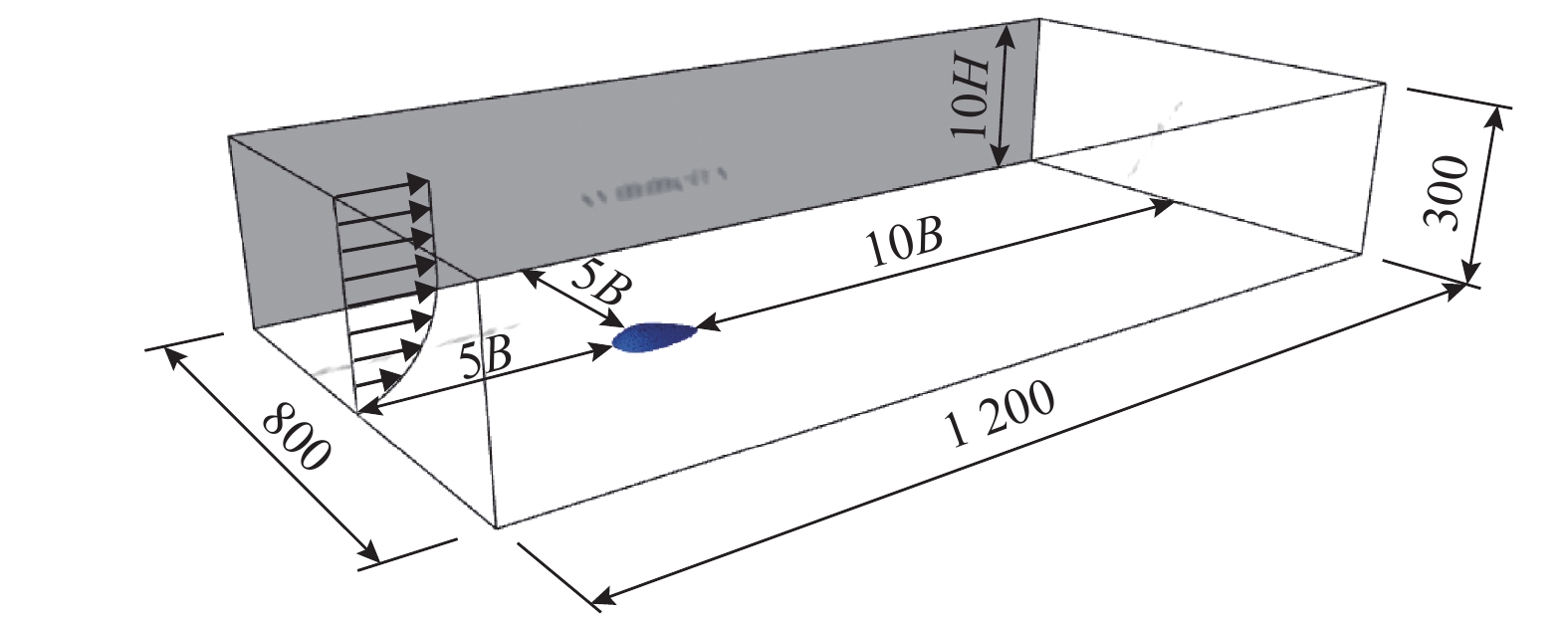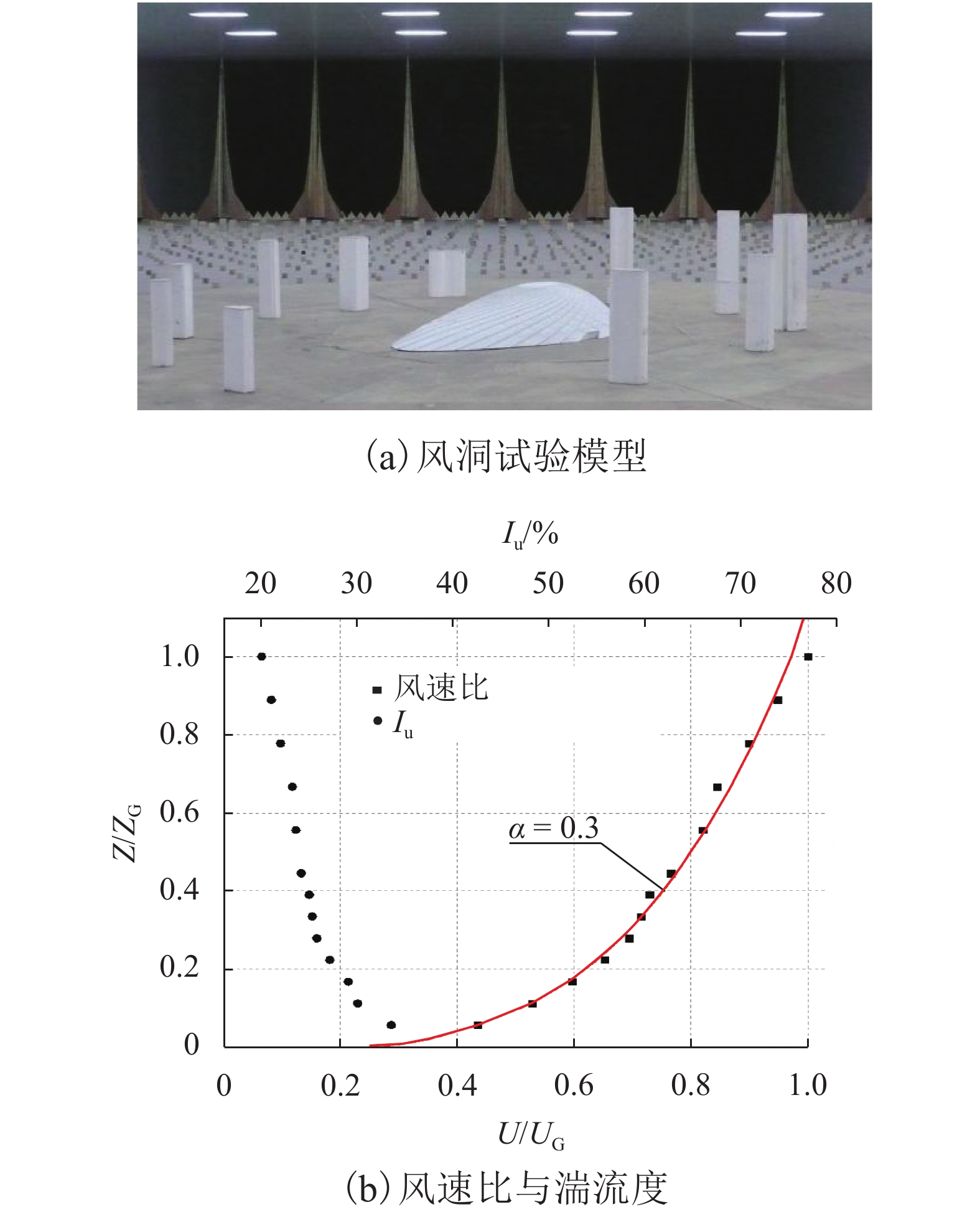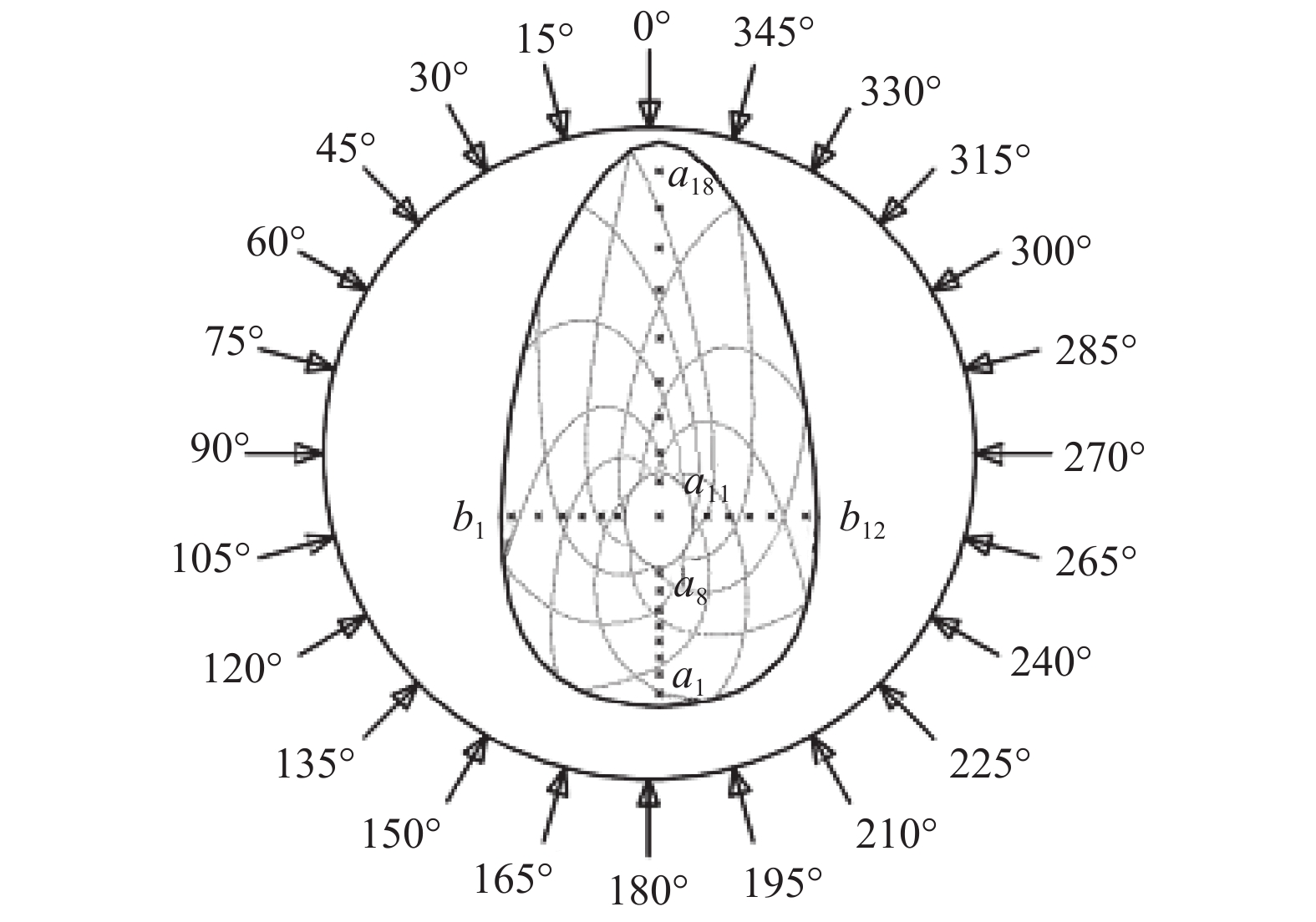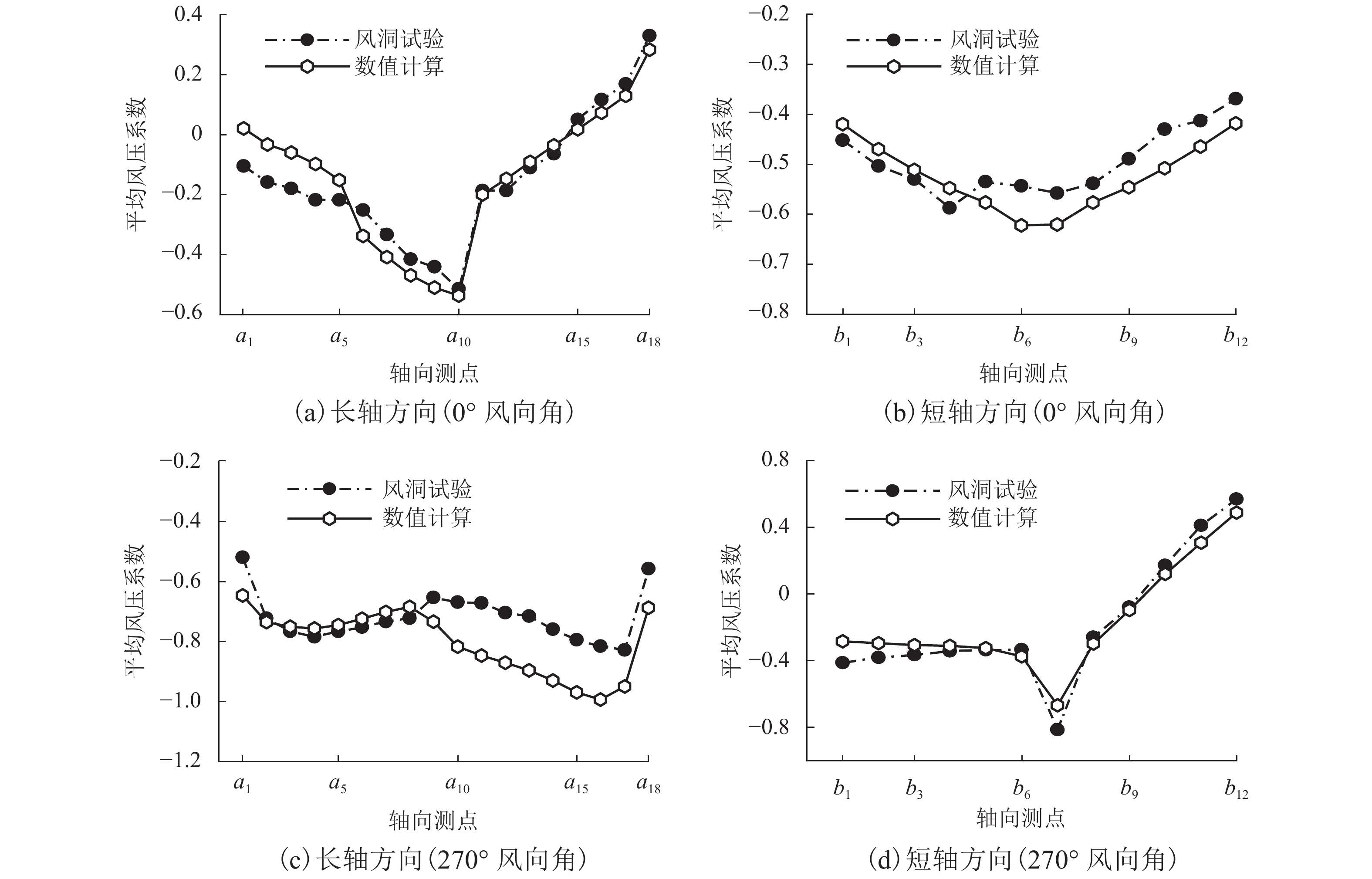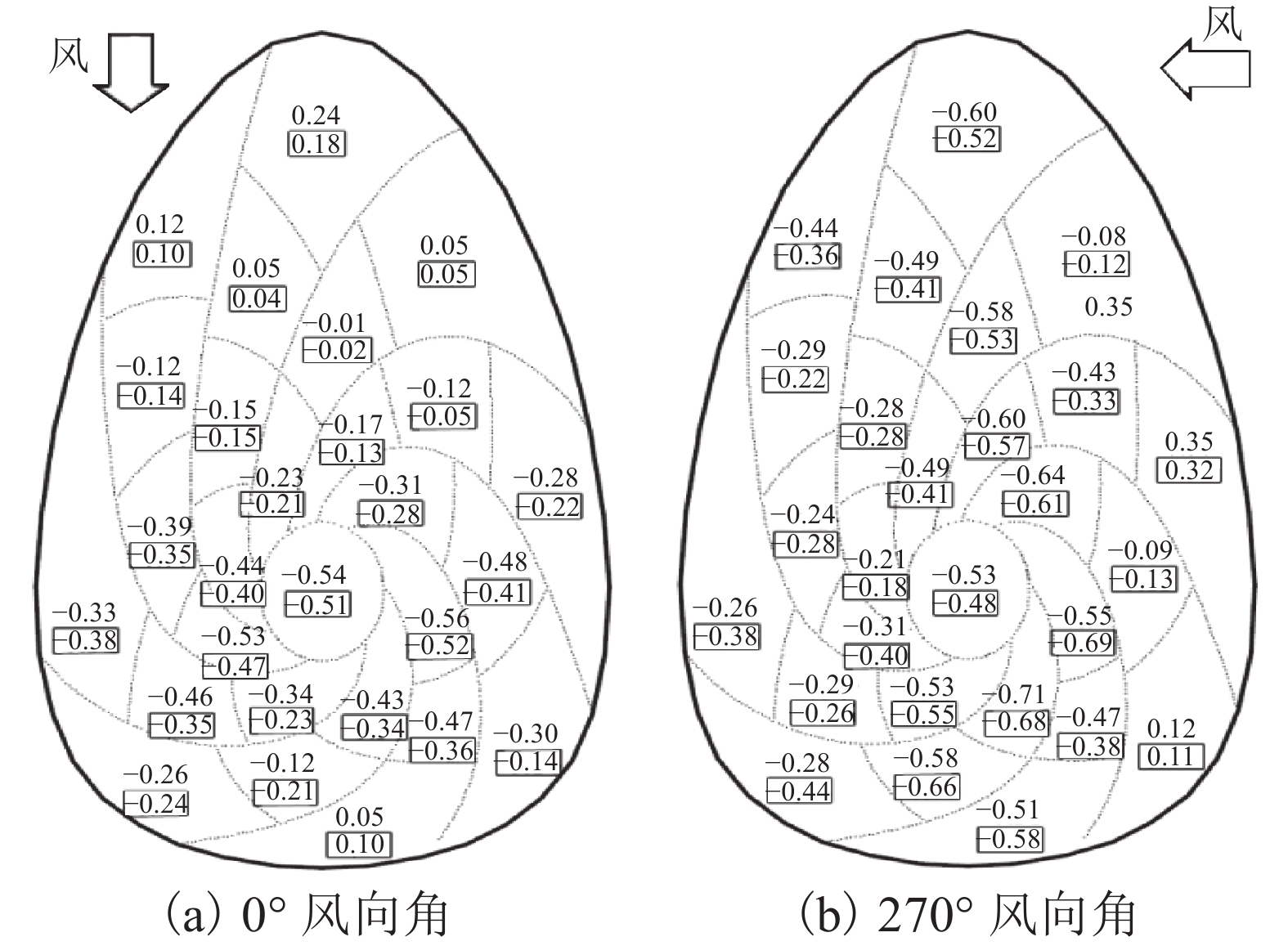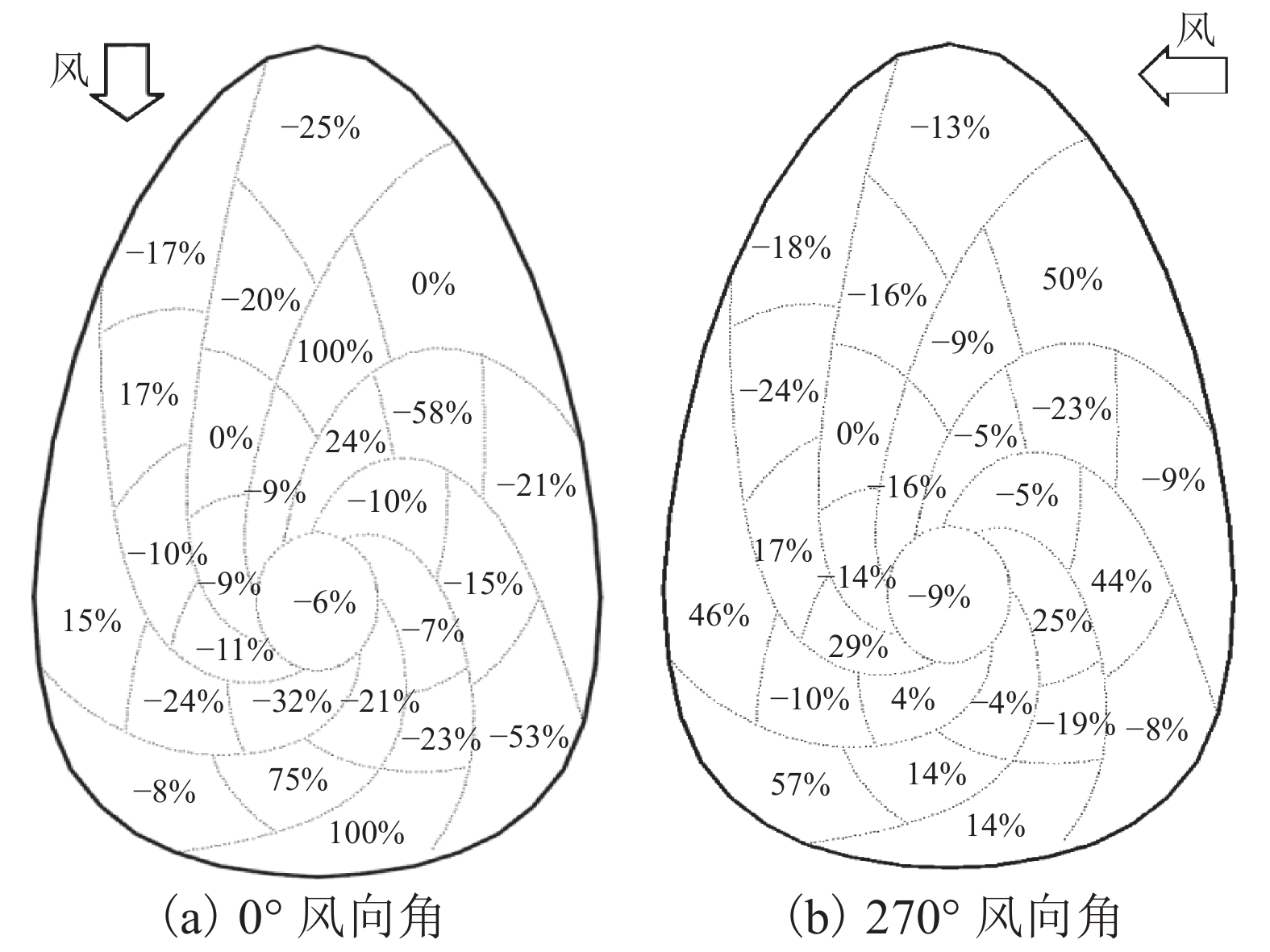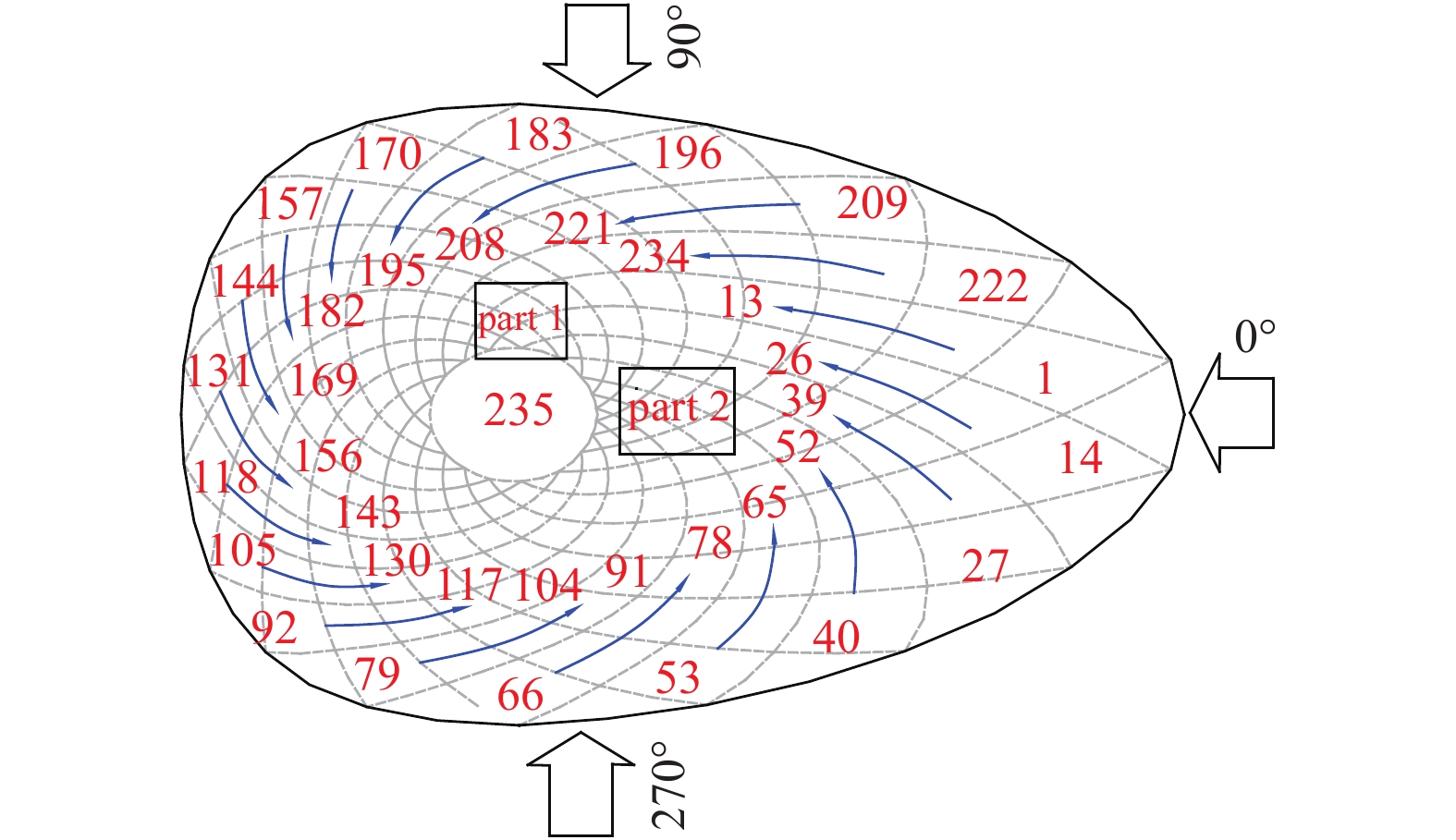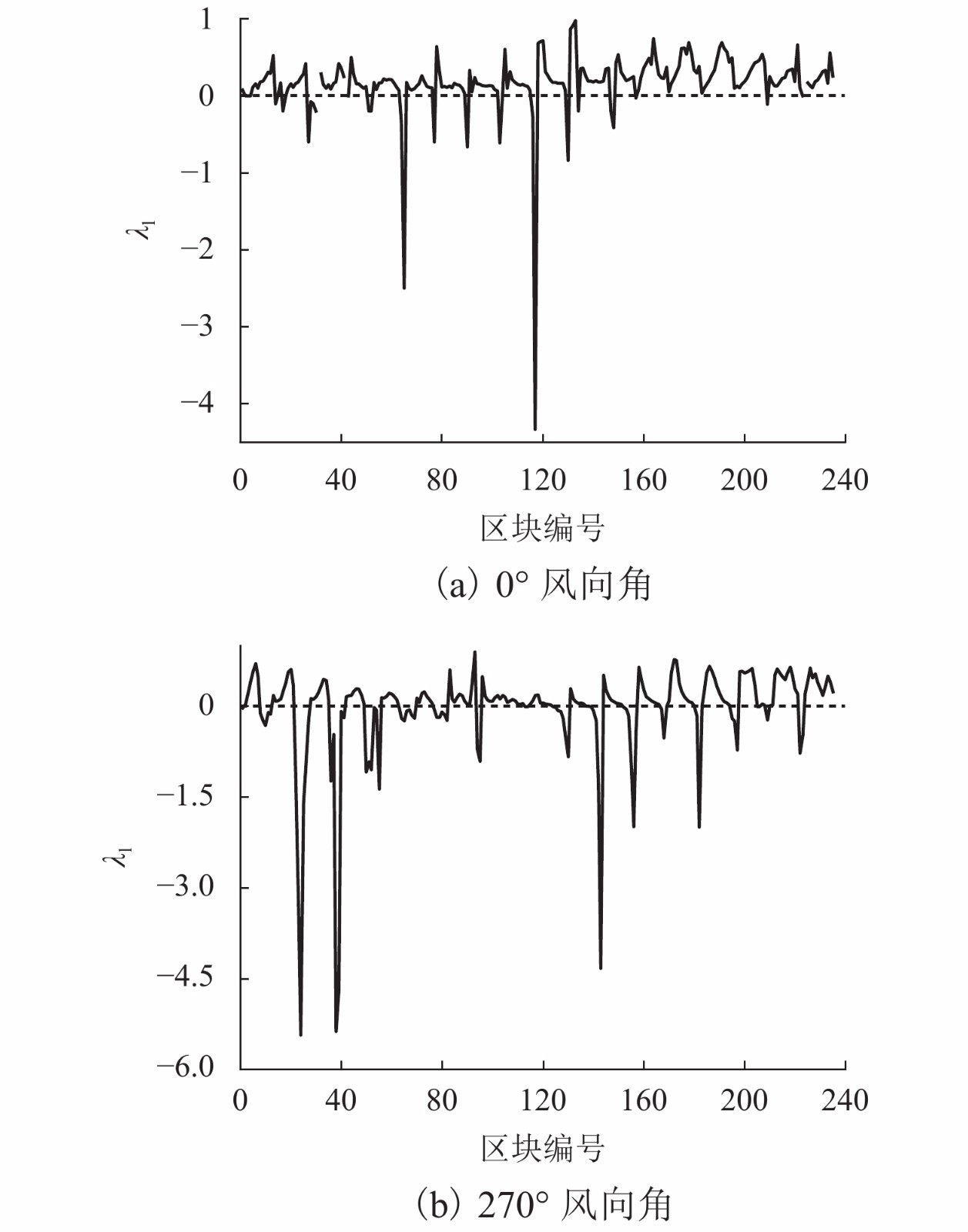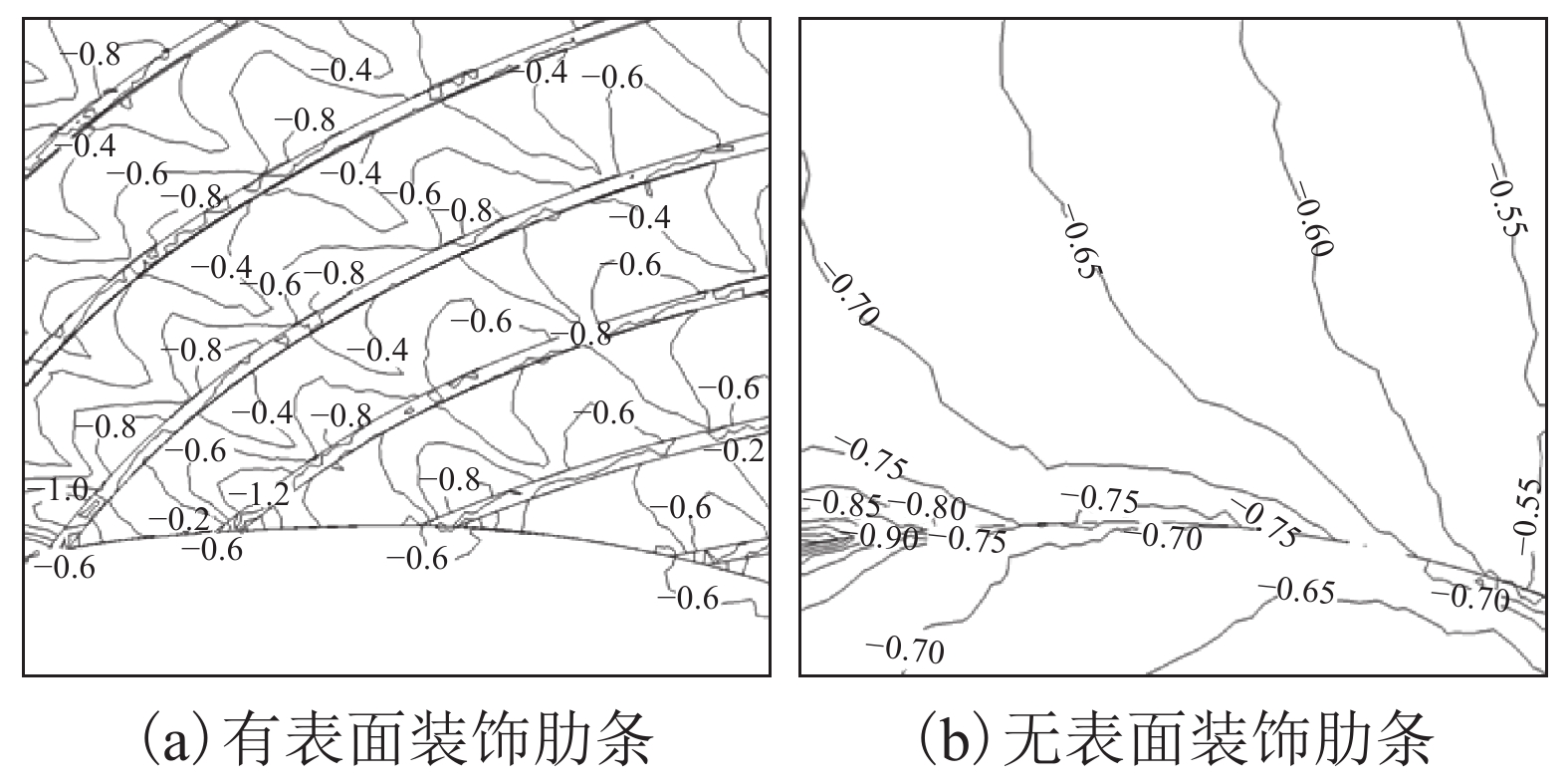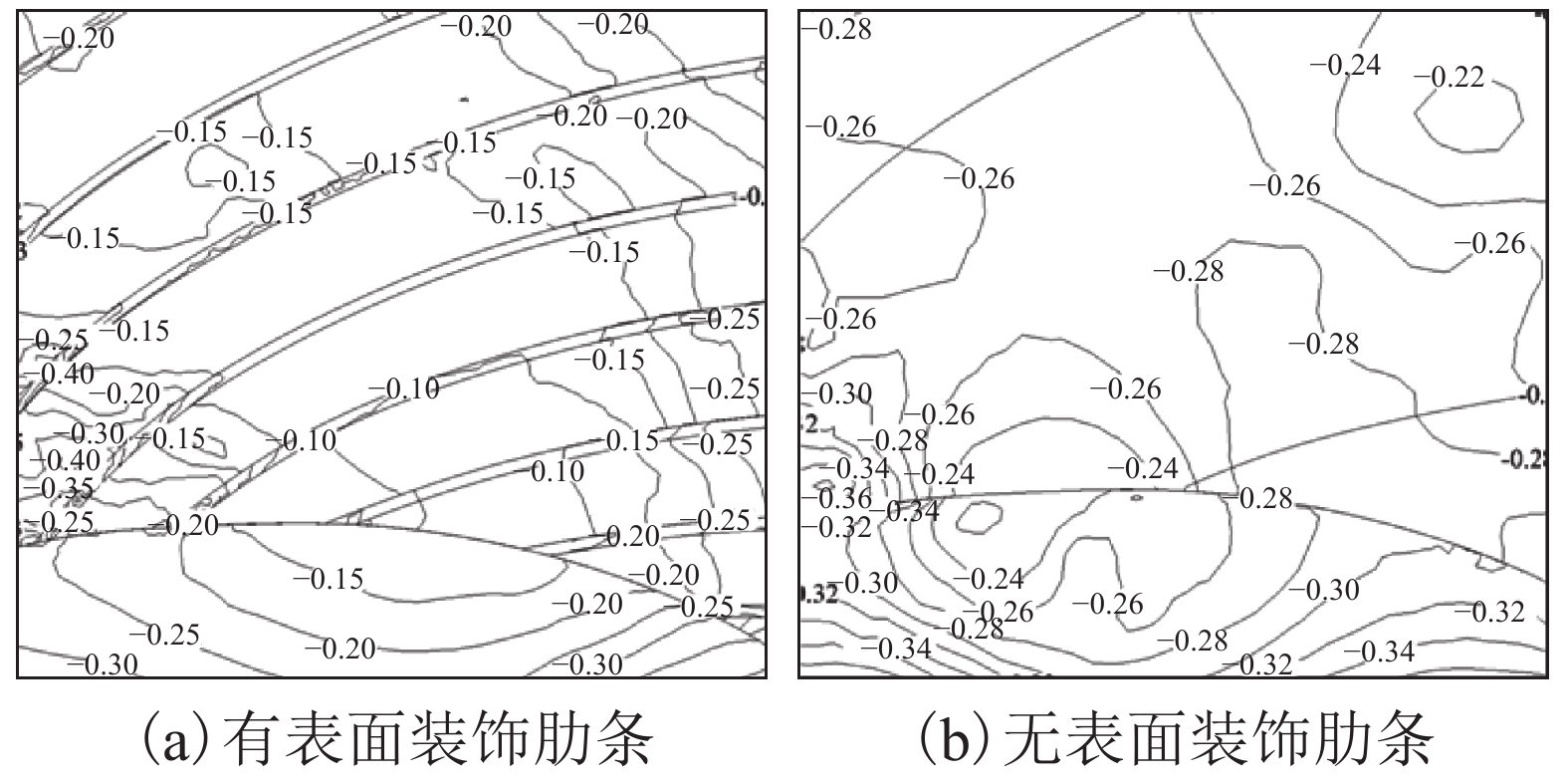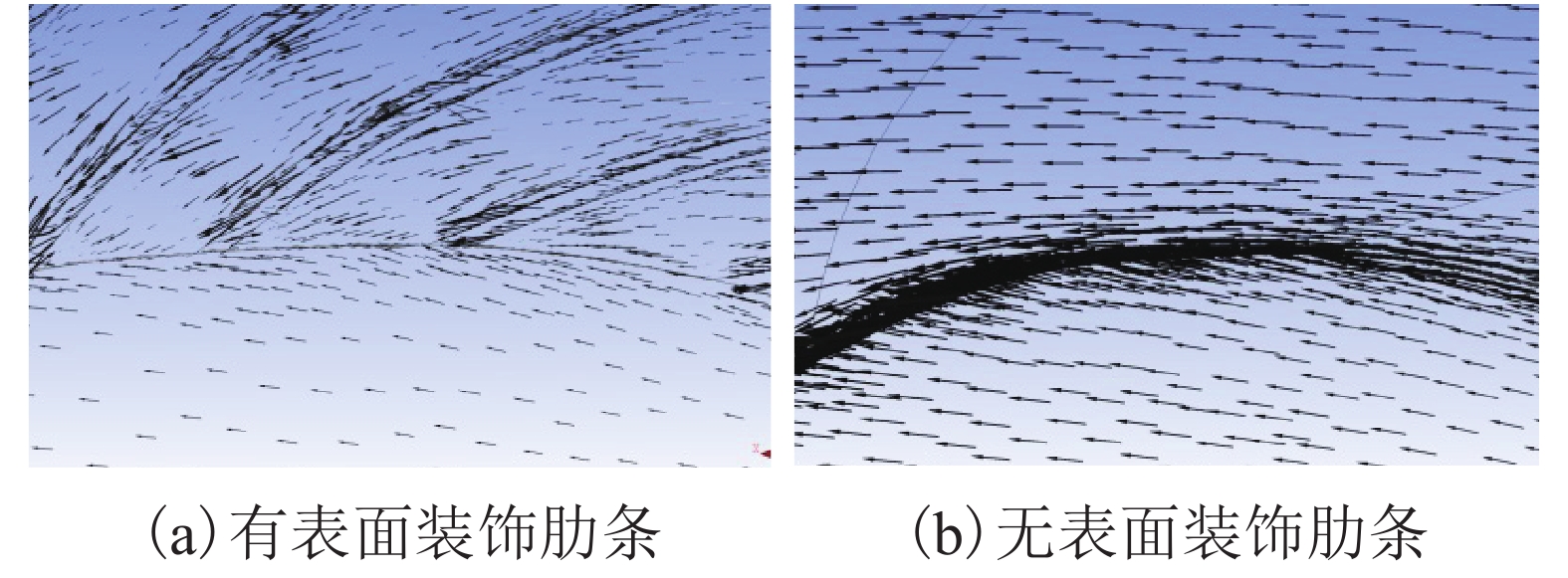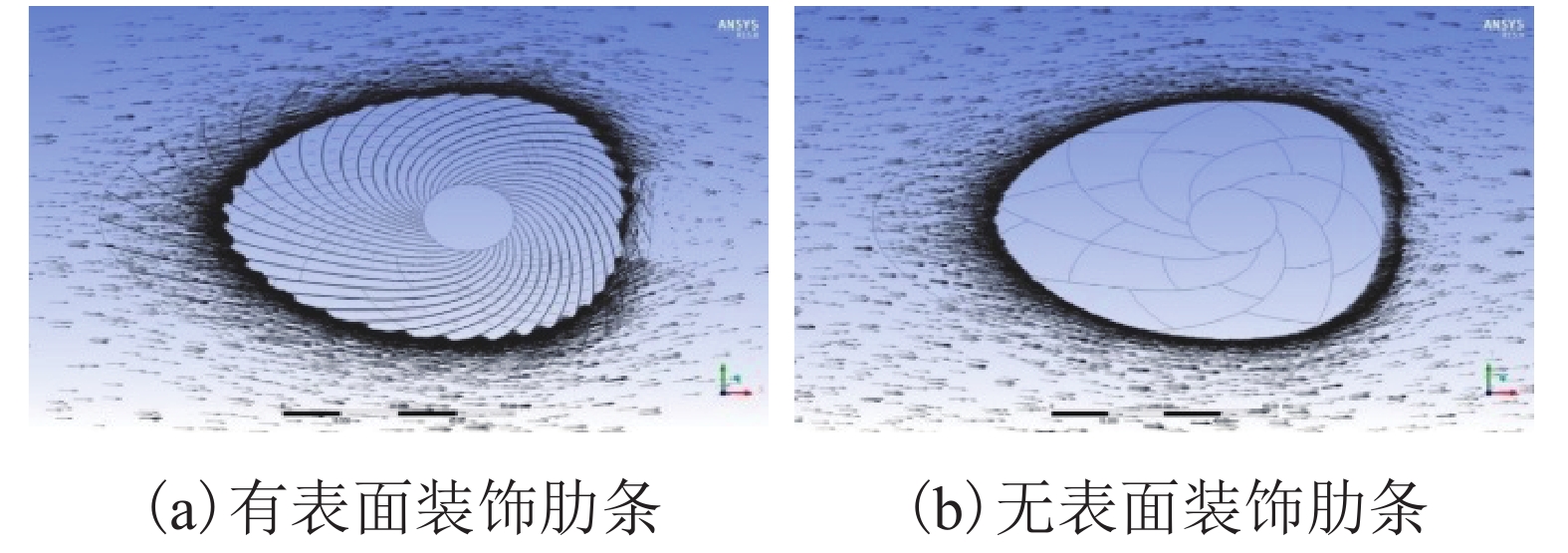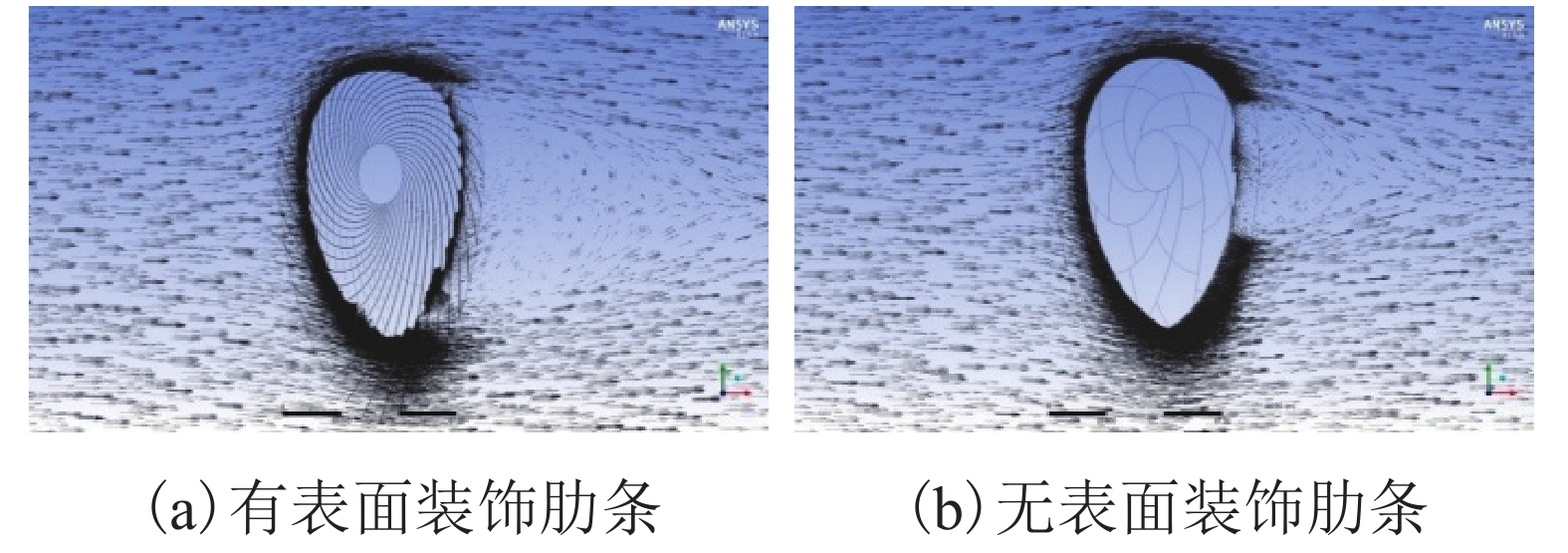Wind Load Characteristics of Large-Span Shell-Shaped Roof with Decorative Spiral Strips
-
摘要: 为了解装饰造型对大跨贝壳形屋盖风荷载特性的影响,研究了某表面有螺旋形装饰条高铁站房屋盖的风压分布特征. 首先,基于Reynolds时均RNG k-ε湍流模型,建立表面有装饰条大跨贝壳形屋盖的数值风洞模型,以模拟屋盖风压分布,通过与风洞试验结果的对比分析,验证了数值模型的可靠性和适用性;然后,建立表面无装饰条贝壳形屋盖的数值风洞,并进行数值模拟;最后,将表面有装饰条屋盖和表面无装饰条屋盖的计算结果进行对比,从风荷载升力系数、局部体型系数和局部区域速度矢量分布方面,分析表面有螺旋形装饰条贝壳形屋盖的风场变化特性. 研究结果表明:数值模拟得到的表面有装饰肋条大跨贝壳形屋盖风载体型系数与风洞试验的体型系数相对误差在 ± 25%以内,风荷载升力系数偏差率在−7.1%~6.1%;表面有装饰条模型的风载升力系数小于表面无装饰条模型,最大偏差率达22.4%,设置装饰条对大跨贝壳形屋盖的整体抗风有利;设置装饰条可以使屋面大部分区域的局部风压减小0~50%,但也会使得个别区域增大2~5倍,在对局部附属构件设计时应予以重点关注;装饰肋条间有一定的狭管效应,肋条对风流的阻挡效应致使风流在肋条处有明显的漩涡产生,并使得肋条自身的风压较高,表面有装饰条屋盖会在背风面产生比表面无装饰条屋盖更大范围的尾涡.Abstract: In order to understand the effect of decorative structure on the wind load characteristics of a large-span shell-shaped roof, the wind pressure distribution characteristics of a high-speed railway station roof with a decorative spiral strip on a certain surface were studied. First, a numerical wind tunnel model for a long-span shell-shaped roof with decorative strips on its surface was established, and the wind pressure distribution on this roof was simulated on the basis of the Reynolds time-averaged RNG k-ε turbulence model. The reliability and applicability of the numerical model were then verified through comparative analysis against wind tunnel test results. Meanwhile, a numerical wind tunnel model for the same roof without decorative strips was also built, and numerical simulations were carried out. By comparing the numerical results of roofs with and without surface decorative strips, the wind field variation characteristics of the long-span shell-shaped roof with decorative spiral strips were analyzed from the aspects of wind-load lift coefficient, wind-load local shape coefficient, and regional velocity vector distribution. Results show that the relative error of the shape coefficient between the numerical simulation and the wind tunnel test was within ± 25%. The deviation rate of the wind-load lift coefficient was between −7.1% and 6.1%. Compared with the simulation result of the roof without surface decoration strip, the wind-load lift coefficient of the roof with surfacedecoration strip was smaller, and the maximum deviation rate could reach 22.4%, which means that the setting of the decorative strip is beneficial for reducing the wind-resistance of the large-span shell-shaped roof. It was also found that the setting of decorative strips would reduce the local wind pressure in most areas of the roof by 0%–50%. However, it also increased the wind pressure in individual regions on the roof by 2–5 times, which should be paid more attention to in the design of local accessory components on the roof. Besides, there is some narrow pipe effect between the decorative strips, and the blocking effect of the decorative strips on airflow leads to the generation of apparent vortices between the strips, making the wind pressure at the strips higher. Furthermore, as the wind flows around the building, the roof with decorative strips on the surface will produce a larger range of trailing vortices on the leeward side than the roof without decorative strips.
-
Key words:
- decorative strips /
- shell-shaped roof /
- lift coefficient /
- shape coefficient /
- trailing vortex
-
表 1 各风向角下的风荷载升力系数及偏差率
Table 1. Wind load lift coefficient and deviation rate undereach wind direction angle
风向角/(°) 风荷载升力系数 偏差率/% β1 β2 β3 β1−β2β1 β3−β2β3 β3−β1β3 0 0.23 0.21 0.24 6.1 10.5 4.6 45 0.36 0.35 0.43 2.2 18.1 16.2 90 0.47 0.45 0.59 3.6 22.4 19.5 135 0.39 0.38 0.42 3.8 10.6 7.1 180 0.25 0.24 0.25 3.9 3.2 −0.8 225 0.38 0.39 0.43 −3.2 8.0 10.8 270 0.39 0.41 0.50 −4.9 18.6 22.4 315 0.38 0.41 0.42 −7.1 1.5 8.0 -
HOLMES J D. Wind loading of structures[M]. 2nd edition. Oxon: Taylor & Francis, 2007: 50-56. YASUI H, MARUKAWA H, KATAGIRI J. Study of wind-induced response of long-span structure[J]. Journal of Wind Engineering and Industrial Aerodynamics, 1999, 83: 277-288. doi: 10.1016/S0167-6105(99)00078-1 UEMATSU Y, YAMADA M, SASAKI A. Wind-induced dynamic response and resultant load estimation for a flat long-span roof[J]. Journal of Wind Engineering and Industrial Aerodynamics, 1996, 65(1/2/3): 155-166. doi: 10.1016/S0167-6105(97)00032-9 中华人民共和国国家标准. 建筑结构荷载规范: GB 50009—2012[S]. 北京: 中国建筑工业出版社, 2012. 李波,魏梓曦,单文姗,等. 建筑造型对悬挑屋盖风荷载的影响[J]. 湖南大学学报(自然科学版),2018,45(5): 94-101.LI Bo, WEI Zixi, SHAN Wenshan, et al. Effect of architectural surfaces on wind load of cantilever roof[J]. Journal of Hunan University (Natural Sciences), 2018, 45(5): 94-101. 张建,李波,单文姗,等. 波纹状悬挑大跨屋盖的风荷载特性[J]. 建筑结构学报,2017,38(3): 111-117.ZHANG Jian, LI Bo, SHAN Wenshan, et al. Wind load on wavy-shaped long-span cantilevered roof[J]. Journal of Building Structures, 2017, 38(3): 111-117. MONTAZERI H, BLOCKEN B. CFD simulation of wind-induced pressure coefficients on buildings with and without balconies:validation and sensitivity analysis[J]. Building and Environment, 2013, 60(3): 137-149. YUAN Ke, HUI Yi, CHEN Zhengqing. Effects of facade appurtenances on the local pressure of high-rise building[J]. Journal of Wind Engineering and Industrial Aerodynamics, 2018, 178: 26-37. doi: 10.1016/j.jweia.2018.05.004 艾辉林,周志勇. 超高层建筑外表面复杂装饰条的风荷载特性研究[J]. 工程力学,2016,33(8): 141-149.AI Huilin, ZHOU Zhiyong. Research on wind load characteristics of complex decorative strips on the outer surface of high-rise building[J]. Engineering Mechanics, 2016, 33(8): 141-149. 全涌,严志威,顾明,等. 局部外形特征对高层建筑立面上围护结构风荷载的影响[J]. 振动与冲击,2009,28(12): 132-135. doi: 10.3969/j.issn.1000-3835.2009.12.032QUAN Yong, YAN Zhiwei, GU Ming, et al. Effects of local shape characteristics on wind loads on the facades of high-rise buildings[J]. Journal of Vibration and Shock, 2009, 28(12): 132-135. doi: 10.3969/j.issn.1000-3835.2009.12.032 沈国辉,钱涛,杨晓强,等. 设有外镂空装饰结构的扭转体型高层建筑风荷载研究[J]. 建筑结构学报,2013,34(6): 68-74.SHEN Guohui, QIAN Tao, YANG Xiaoqiang, et al. Study of wind loads on torsion shaped high-rise building with outer pierced ornament structure[J]. Journal of Building Structures, 2013, 34(6): 68-74. 林拥军,沈艳忱,李明水,等. 大跨翘曲屋盖风压分布的风洞试验与数值模拟[J]. 西南交通大学学报,2018,53(2): 226-233. doi: 10.3969/j.issn.0258-2724.2018.02.002LIN Yongjun, SHEN Yanchen, LI Mingshui, et al. Evaluation of wind pressure distribution for large-span warpage roof via wind tunnel testing and numerical simulation[J]. Journal of Southwest Jiaotong University, 2018, 53(2): 226-233. doi: 10.3969/j.issn.0258-2724.2018.02.002 LU C L, LI Q S, HUANG S H, et al. Large eddy simulation of wind effects on a long-span complex roof structure[J]. Journal of Wind Engineering and Industrial Aerodynamics, 2012, 100: 1-18. doi: 10.1016/j.jweia.2011.10.006 LIU Man, LI Qiusheng, HUANG Hong, et al. Evaluation of wind effects on a large span retractable roof stadium by wind tunnel experiment and numerical simulation[J]. Journal of Wind Engineering and Industrial Aerodynamics, 2018, 179: 39-57. doi: 10.1016/j.jweia.2018.05.014 BLOCKEN B. 50 years of computational wind engineering:past,present and future[J]. Journal of Wind Engineering and Industrial Aerodynamics, 2014, 129: 69-102. doi: 10.1016/j.jweia.2014.03.008 DELAUNAY D, LAKEHAL D, PIERRAT D. Numerical approach for wind loads predictionon buildings and structures[J]. Journal of Wind Engineering and Industrial Aerodynamics, 1995, 57: 307-321. doi: 10.1016/0167-6105(94)00112-Q 林拥军,宋长江,罗楠,等. 大跨度单层网壳结构风洞试验研究[J]. 工业建筑,2013,43(7): 130-134.LIN Yongjun, SONG Changjiang, LUO Nan, et al. Study on wind tunnel test of large-span single-layer reticulated shell structure[J]. Industrial Construction, 2013, 43(7): 130-134. FRANKE J, HELLSTEN A, SCHLUNZEN H, et al. Best practice guideline for the CFD simulation of flows in the urban environment[M]. Brussels: COST Office, 2007: 1-52. YOSHIHIDE T, AKASHI M, RYUICHIRO Y, et al. AIJ guidelines for practical applications of CFD to pedestrian wind environment around buildings[J]. Journal of Wind Engineering and Industrial Aerodynamics, 2008, 96: 1749-1761. doi: 10.1016/j.jweia.2008.02.058 Architectural Institute of Japan. Recommendations for loads on buildings/commentary[S]. Tokyo: Architectural Institute of Japan, 2004. 潘毅,李玲娇,马存明,等. 四川稻城亚丁机场航站楼风洞试验研究[J]. 工业建筑,2014,44(9): 139-144.PAN Yi, LI Lingjiao, MA Cunming, et al. Wind tunnel test on the terminal of Daocheng Yading airport in Sichuan[J]. Industrial Construction, 2014, 44(9): 139-144. 王振华,袁行飞,董石麟. 大跨度椭球屋盖结构风压分布的风洞试验和数值模拟[J]. 浙江大学学报(工学版),2007,41(9): 1462-1466.WANG Zhenhua, YUAN Xingfei, DONG Shilin. Wind tunnel experiment and numerical simulation of wind pressure distribution of long-span ellipsoidal shell structure[J]. Journal of Zhejiang University (Engineering Science), 2007, 41(9): 1462-1466. MURAKAMI S, MOCHIDA A. 3-D numerical simulation of airflow around a cubic model by means of the k-e model[J]. Journal of Wind Engineering and Industrial Aerodynamics, 1988, 31(10): 283-303. LETCHFORD C W, SARKAR P P. Mean and fluctuating wind loads on rough and smooth parabolic domes[J]. Journal of Wind Engineering and Industrial Aerodynamics, 2000, 88: 101-117. doi: 10.1016/S0167-6105(00)00030-1 -






 下载:
下载:

